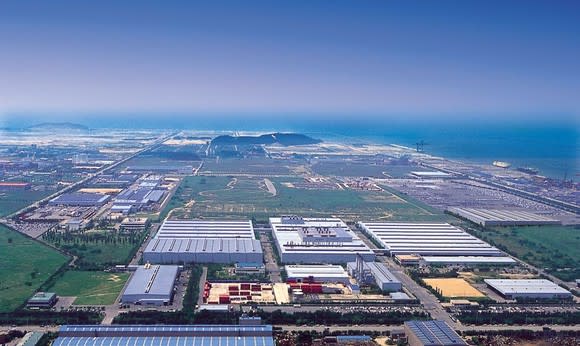GM Korea Is Running Out of Time
Two months ago, General Motors (NYSE: GM) announced plans to permanently close one of its four assembly plants in South Korea. The company also strongly hinted that additional restructuring actions would be necessary to get GM Korea back to profitability.
Since then, the situation has escalated. General Motors has said it is willing to invest more money in its South Korean affiliate to keep the latter out of bankruptcy, but only if the local labor union makes big concessions, the Korea Development Bank invests additional capital in the company, and the government offers significant tax breaks. Recent developments make it seem very unlikely that all of these pieces will come together in time to save GM Korea.
The situation is untenable
GM has been consistently unprofitable in South Korea for many years thanks to a combination of high costs and a poor product mix. (GM Korea has historically focused on exports of smaller vehicles, which tend to carry razor-thin margins and have fallen out of favor with car buyers.) In its most recent fiscal year, GM Korea reported a staggering loss of $1.1 billion.
Some of the financial problems have been self-inflicted. General Motors has steadily retrenched outside of its core markets of North America and China in recent years. This entailed exiting numerous countries where GM had been selling vehicles imported from South Korea.
Thus, it should be no surprise that GM Korea's production and sales have fallen by nearly half since 2013. The result was low factory utilization: a recipe for big losses.

In February, GM decided to close one of its manufacturing facilities in South Korea. Image source: GM Korea.
However, the union's intransigence has also contributed to the current crisis. Periodic strikes, constant demands for higher wages and benefits, and resistance to productivity enhancements caused costs to spiral out of control. Even with stronger sales and a better product mix, it's not clear that GM Korea could be profitable with its current cost structure.
All sides are dragging their feet
Publicly, GM has expressed a commitment to turning its Korean business around. However, it has also set a deadline of April 20 -- this Friday -- for striking agreements with the other stakeholders. This isn't an arbitrary deadline. GM Korea is supposed to make severance payments on April 23 to workers who have recently accepted buyouts, but it doesn't have the cash to do so. The parent company is unwilling to commit more money to South Korea without firm deals to get GM Korea back on track.
Additionally, talks with the union have broken down. Earlier this month, a group of workers (including some union negotiators) ransacked the GM Korea CEO's office after he stated that the company didn't have the money to pay bonuses due on April 6. General Motors responded by demanding additional security measures for future bargaining sessions, which the union refused to allow.
Finally, the Korea Development Bank doesn't expect to be ready to decide about making further investments in GM Korea until early May. South Korean government officials have also stated that state support would only be possible if GM Korea had a clear path to long-term survival. The government doesn't have much choice in this matter, given the public's lack of sympathy for either GM Korea or its employees.
What's the point of staying in Korea, anyway?
It's possible that the looming April 20 deadline will encourage all of the interested parties to compromise, leading to an eleventh-hour agreement. However, I think it's unlikely any such effort will succeed.
The simple fact is that GM Korea has no clear reason for existence. General Motors' domestic sales volume in South Korea is plunging and will likely fall below 100,000 units this year. That makes the South Korean market too small to support local manufacturing without a large export business.
Meanwhile, there's no good business reason for maintaining an export hub in a high-cost country that's far from its primary markets. Rebuilding GM Korea's production volume would almost certainly entail ramping up exports to the Americas, but it would be cheaper to build those vehicles in the U.S., Canada, Mexico, and South America.
Barring a stunning change in the union's attitude -- including a willingness to accept reductions in benefits and to improve productivity -- the dismantling of GM Korea could begin within a week.
More From The Motley Fool
Adam Levine-Weinberg owns shares of General Motors. The Motley Fool has no position in any of the stocks mentioned. The Motley Fool has a disclosure policy.

 Yahoo Finance
Yahoo Finance 